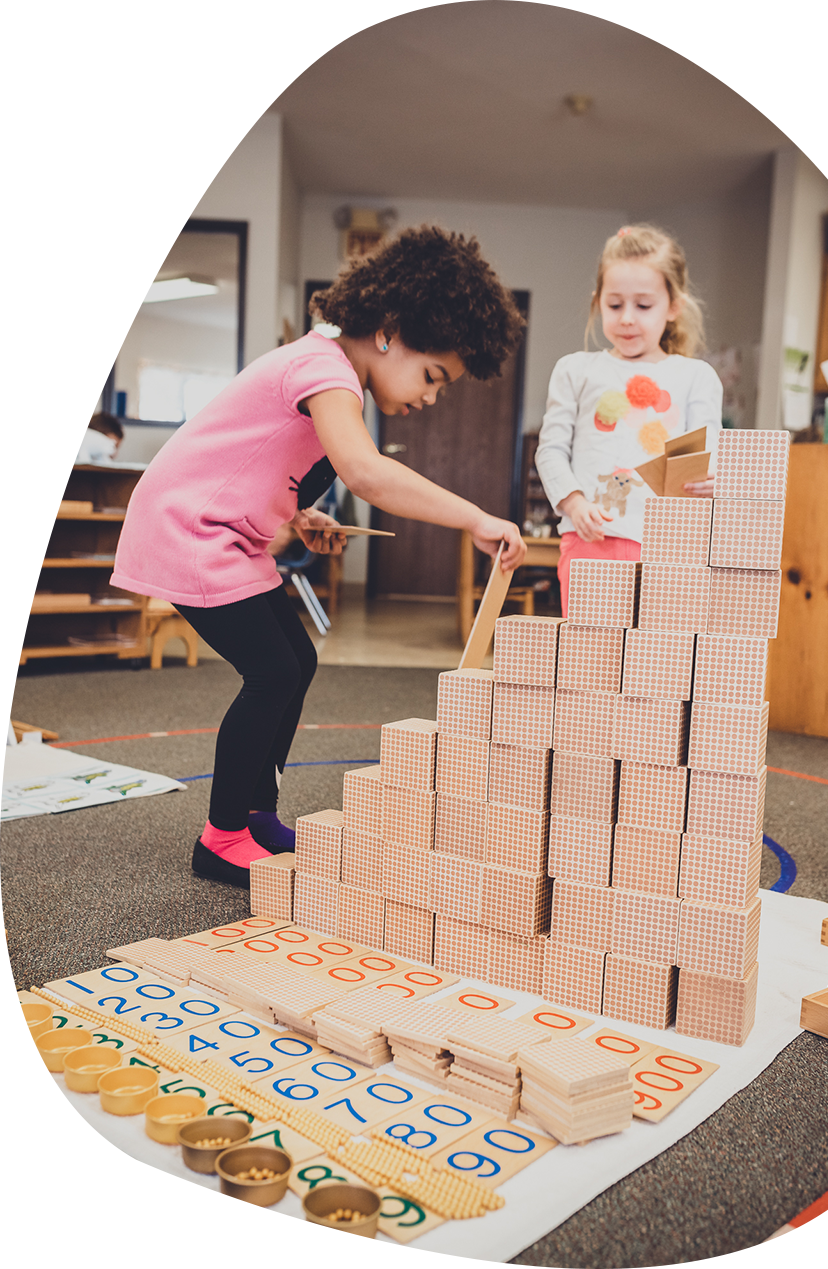Why Montessori?
The Montessori Classroom
The Montessori Teacher and Environment
The primary goals of our Montessori teachers are to:
- Awaken the child’s spirit and imagination
- Encourage the child’s natural desire for independence
- Help the child develop the kindness, courtesy and self-discipline that will allow her to become a full member of society
- Model for the child how to observe, question and explore ideas independently
To achieve these goals, the teachers must first prepare a beautiful, orderly environment that provides the necessary variety of purposeful activities for the child. The teacher then will observe the children to know their individual needs and interests and directs the children toward work appropriate for them. Knowing how to observe constructively and when, and how much, to intervene, is one of the most important talents and skills of the Montessori teacher.
Enroll Today!
We have full- and part-time openings for the school year. Call or email to schedule your tour of the school today!

About
Montessori schools are named after Dr. Maria Montessori, a noted Italian physician, educator and humanitarian, who lived from 1870 to 1952. Working with children aged 2 to 7 in the early 1900s, Montessori observed that children learned more effectively and responded more positively and naturally to practical activities in the classroom than traditional book-based lessons. In addition, she noted that students developed greater self-discipline, independence, and a passion for learning when given the freedom to choose their own classroom activities on which to work.
Dr. Maria Montessori divided a child’s growth into four distinct planes of development. The first plane of development, the age of formation, covers birth to age six. During this time, a child has what Dr. Montessori termed an absorbent mind. During the first three years, the child is unconsciously absorbing his surroundings. During the second three years, the child moves from unconscious absorption to conscious work.
The teaching staff at Children’s Day Montessori recognizes the child’s need to gather facts and make sense of previous impressions. Additionally, the classroom environments are carefully prepared to encourage learning and independence. We recognize that children develop and learn best when their physical needs are met and they feel safe, valued and psychologically secure.
Children’s Day offers three primary classrooms serving children beginning at age 33 months and continuing through the kindergarten year. All classrooms have three-year age spans to allow children to both learn from and teach other children.
Philosophy
Montessori Education originated in Italy by Dr. Maria Montessori and was introduced to the U.S. in 1913. Dr. Montessori developed a method of education that began with observation of the child's needs and interests. She then formed the curriculum around these needs and interests. The Montessori method of education is based on the premise that within each child lies the power to develop his or her own physical, intellectual, social, emotional, and spiritual potential to the fullest.
Montessori education introduces the joy of learning at an early age and provides a framework in which individual and social disciplines go hand in hand. Children's Day Montessori stresses the importance of nurturing the development of the whole child as outlined in the Montessori method. We believe there are two ingredients essential to the learning process– motivation and active exploration.
Motivation – The National Association for the Education of Young Children states that "children do not need to be forced to learn; they are motivated by their own desire to make sense of their world." It is our job to present the world to them in a way that is meaningful and accessible, allowing them to be motivated and guided by their own strong intrinsic desire to learn.
Active Exploration – Children acquire knowledge–whether from the physical or social world–through direct experience; that is, playful interaction with real objects and real people. They learn through active exploration and, as such, it is our goal to provide them with a safe yet stimulating environment to carry out that exploration.

